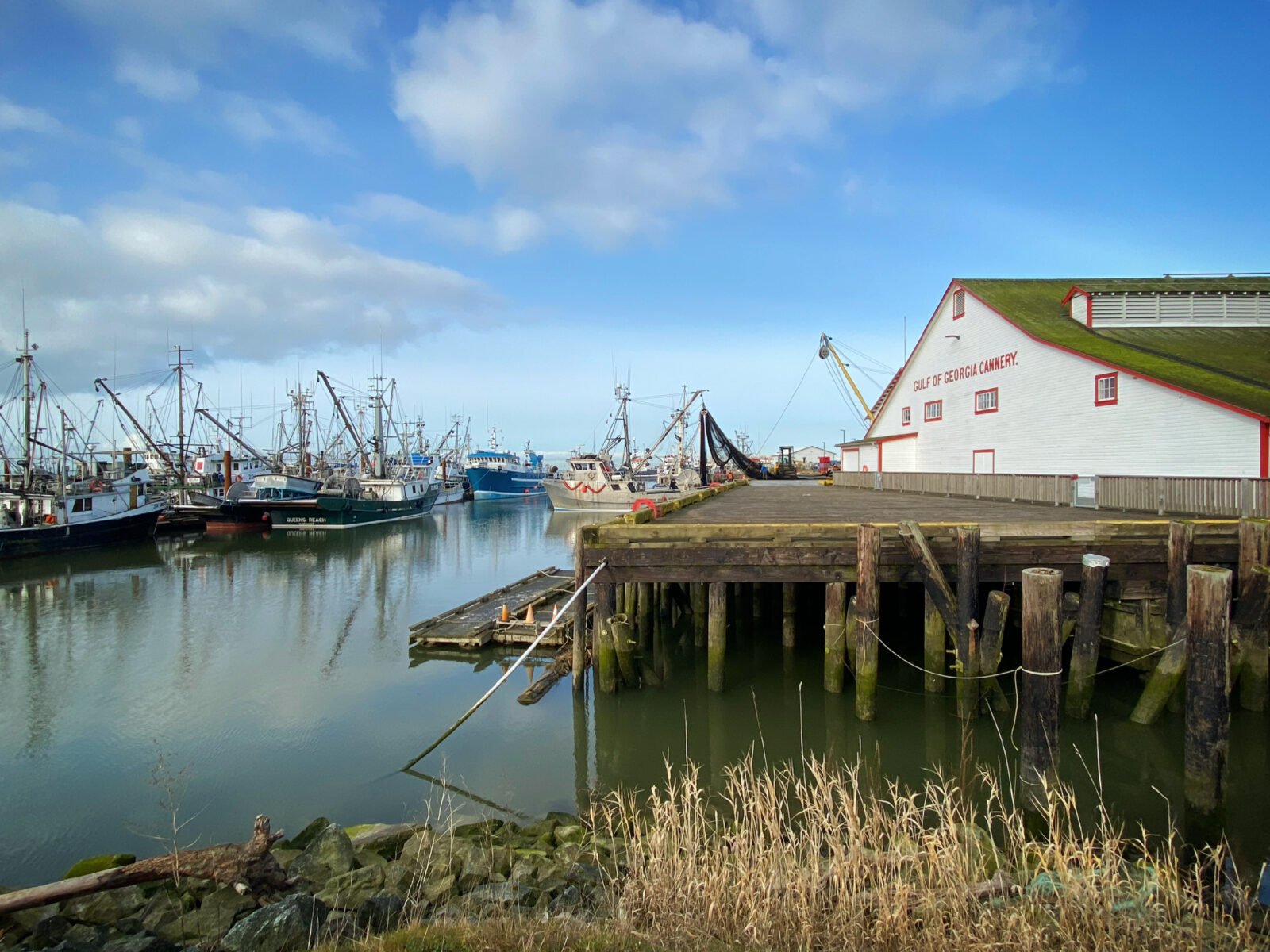Steveston grew beside the Fraser River, where fishing boats once crowded the docks and canneries lined the shore. Steveston Japanese Canadian history runs deep here, forming the foundation of a waterfront village built through labor, community, and quiet resilience. For over a century, the town has been shaped by fishing, migration, and memory. Walk the streets today and you’ll see what remains: the old cannery, the martial arts centre, and the signs of a Japanese Canadian community that helped build the town and continues to shape it.
The Cannery Roots
Long before Steveston became a weekend destination, the village built its identity around the tides. In 1883, the first of over 15 salmon canneries opened along the Fraser River. The Gulf of Georgia Cannery, now a national historic site, once packed tens of thousands of fish each day. It followed a rhythm shaped by early morning hauls, sharp knives, and the scent of brine and iron.
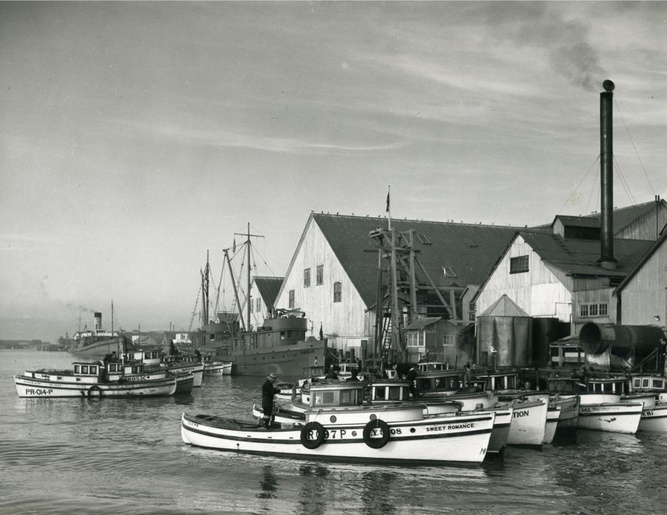
Japanese immigrants arrived in Steveston around 1887, many from Wakayama Prefecture. They came as fishermen and cannery workers, often settling permanently and sending for “picture brides” to build families. By the early 20th century, they made up the majority of the fishing fleet, owned boats, and established bunkhouses, shrines, and community halls along the waterfront, as documented by the Richmond Archives.
The Japanese Fishermen’s Benevolent Society, formed in 1897, played a central role in building this community. It operated hospitals, schools, and social networks at a time when Japanese Canadians faced legal and social exclusion.
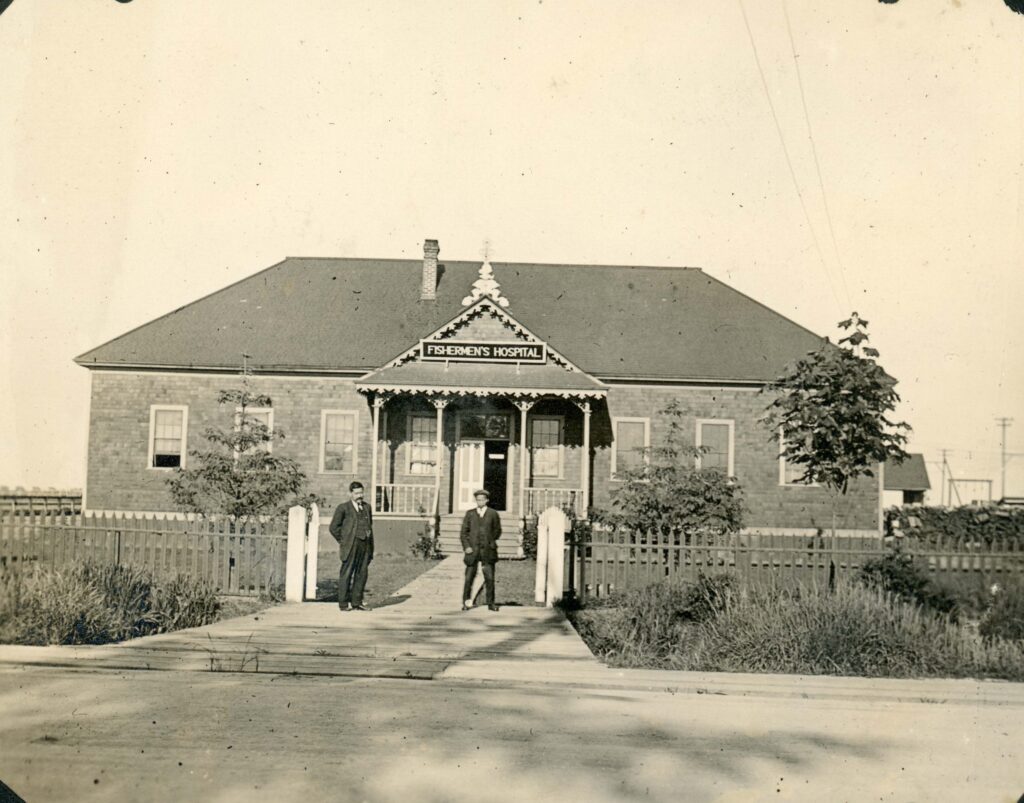
Interrupted Histories
In 1942, that rhythm shattered. Under the War Measures Act, the Canadian government forcibly removed Japanese Canadians from the West Coast. Authorities seized homes, businesses, boats, and fishing licenses, often auctioning them off without consent. Families were separated and relocated to internment camps across British Columbia and Alberta, as explored in BC: An Untold History.
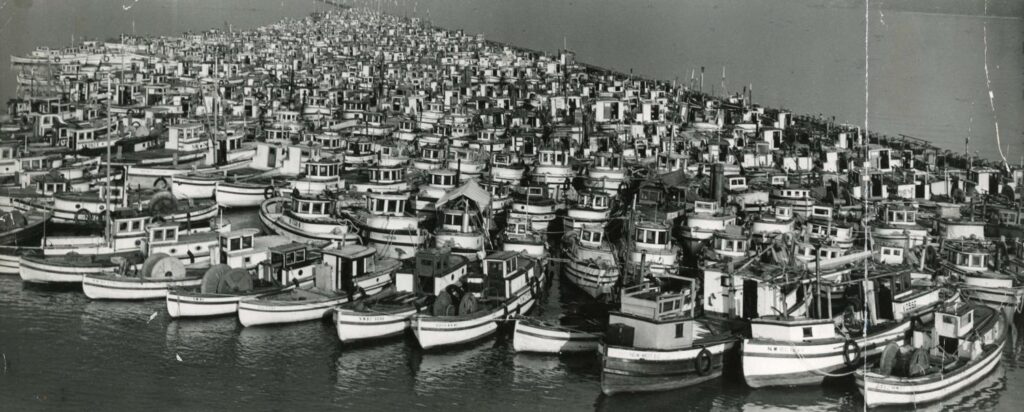
The impact was generational. What vanished wasn’t just property, but continuity. Communities emptied overnight. Traditions and family networks fractured.
Today, Steveston acknowledges this loss with intention. The Steveston Nikkei Memorial stands at the corner of 3rd Avenue and Moncton Street, near where many families once lived. Its inscriptions name the towns and internment camps where Steveston residents were sent, grounding the rupture in place.
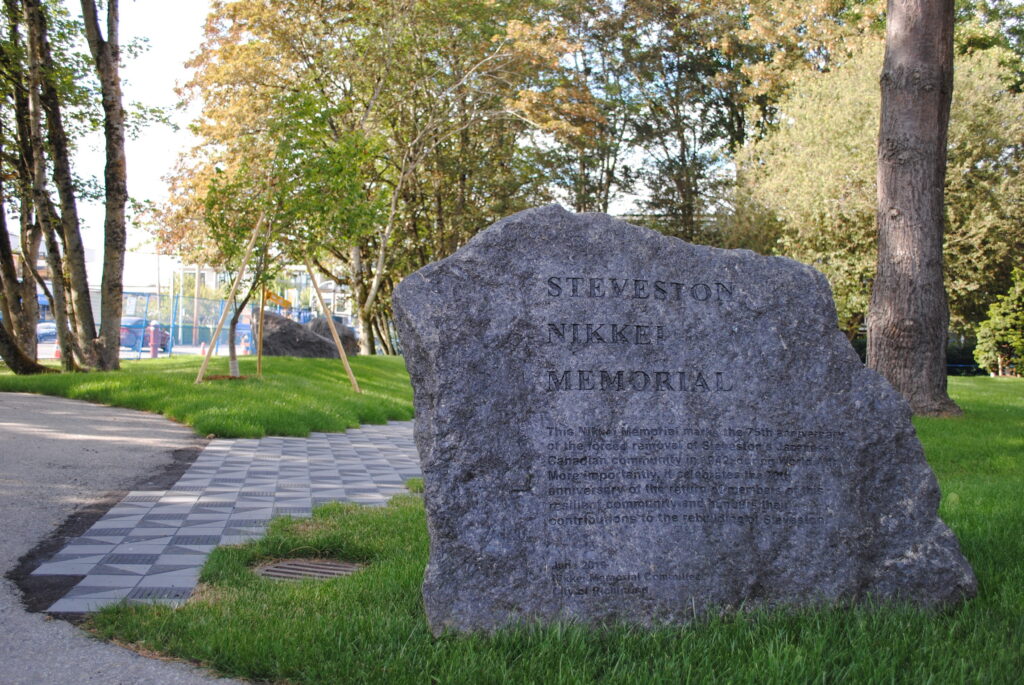
Returning, Quietly
After the war, the welcome back was not immediate. Many returned to find their homes occupied, their boats gone, their businesses dissolved. Families faced hostility, and rebuilding took time. But they came back. Some moved into church basements or rebuilt on land purchased by friends who had safeguarded it in their absence. Others started again from scratch.
Through resilience and quiet determination, Japanese Canadians reestablished their presence in Steveston. They reopened businesses, built homes, and rejoined the rhythms of the water. The fishing industry remained central, even as the town changed. Their efforts wove memory back into the fabric of daily life.
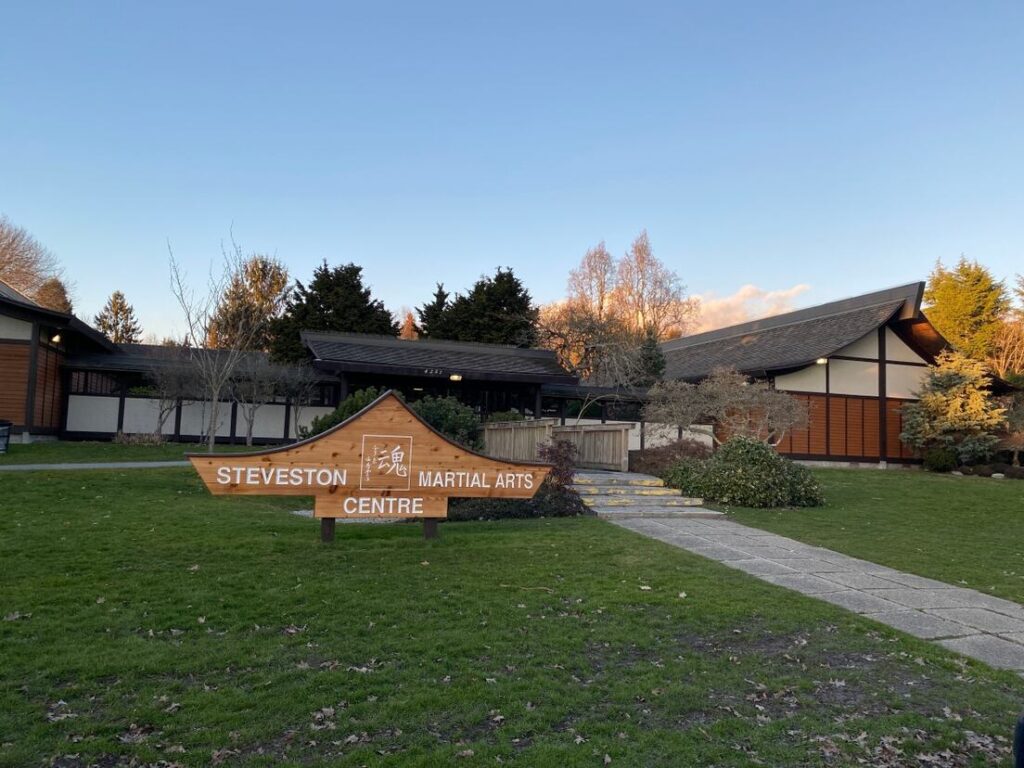
Community halls reopened. Annual gatherings resumed. Generations born after internment were raised with an understanding of both disruption and perseverance.
Some of what they built still stands. The Steveston Martial Arts Centre, formerly the Japanese Canadian Cultural Centre, continues to operate today. It serves not only as a place to practice judo and kendo, but as a living extension of Japanese Canadian heritage. A place built by the community and sustained across generations. Its presence is quiet but steady, much like the town itself.
Everyday Waterfront Now
Steveston today moves quietly, not with nostalgia but with rhythm. Fishing boats still head out with the tide. On the boardwalk, kids finish ice cream cones while gulls drift above the harbor. The air carries traces of cedar smoke and freshly fried cod.
Weekdays follow a familiar choreography. Shopkeepers greet regulars. Fishers mend nets behind dockside sheds. Joggers pass through Garry Point, where kites snap in the wind.
Seasonal shifts bring their own tone. Summer brings crowds and outdoor events. Winter softens everything into a foggy stillness.
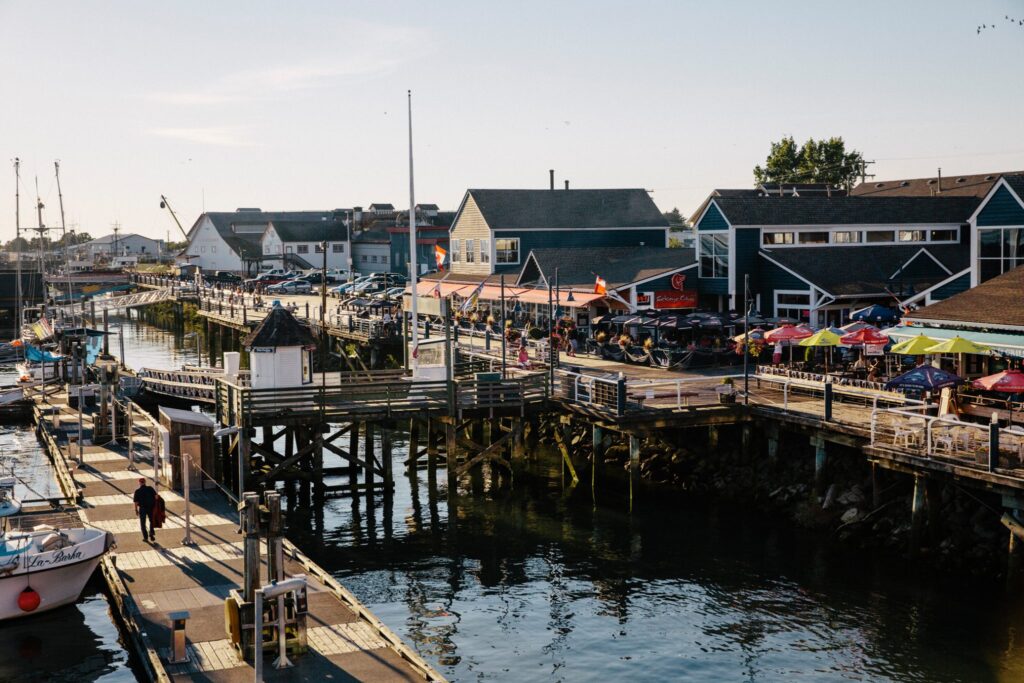
The Living Memory
Inside the Gulf of Georgia Cannery, rusted tools rest beside photographs and oral histories. The museum captures the technical story of the industry but also preserves the human one.
Memory lives outside the museum as well. The Japanese Fishermen’s Benevolent Society building still stands. During the Richmond Maritime Festival, paper lanterns glow across the riverfront. Every Canada Day, the Salmon Festival Parade moves past the cannery, a reminder that this town continues to honor its past.
These are not artifacts of a forgotten story. They are part of daily life. Children train in martial arts halls built by grandparents. Elders pass by plaques that name the streets they returned to rebuild. History, here, is not something you visit. It’s something you live alongside.
Steveston Japanese Canadian History Lives On
Steveston is a working waterfront, a site of cultural memory, and a place to linger. Its story is written in boats and buildings, in plaques and quiet rituals. Walk the streets long enough and history doesn’t just speak. It stays with you.
